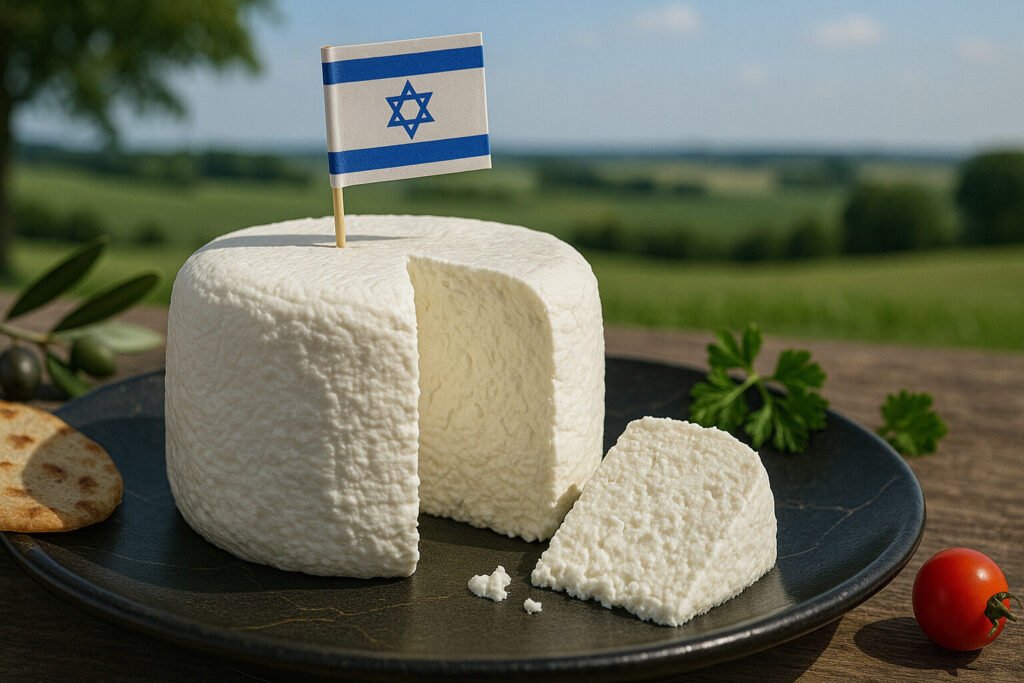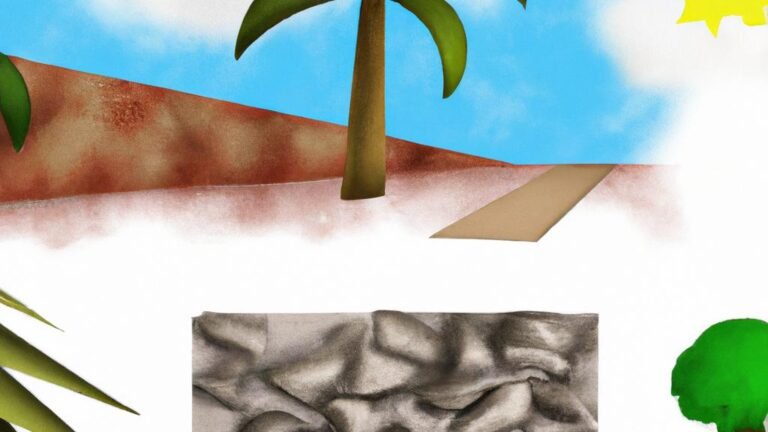
Making a noticeable fragrant presence amidst other dairy products, Labaneh takes its distinguished place with its unique texture and versatile culinary uses. Hailing from the Middle East, particularly Lebanon and Jordan, Labaneh is a soft cheese known for its tangy taste and high nutritional value.
In this article
Unveiling the Creaminess of Labaneh: Middle Eastern Cheese
Labaneh, also known as yogurt cheese, is made from pasteurised or raw cow’s, goat’s or sheep’s milk. The fermentation process of Labaneh differentiates it from other types of cheese, contributing to its characteristic sour taste. The technique involves straining yogurt in a cheesecloth, which absorbs the extra whey and results in a thick, cream cheese-like texture.
The nutritional value of Labaneh makes it a popular choice among health enthusiasts; Labaneh provides protein and probiotics, which can aid digestion and help maintain gut health. The cheese also contains calcium, phosphorus and vitamin B, elements that contribute to bone health. Regular consumption, in moderation, of this creamy delight serves as a good source of protein, particularly for those following vegetarian or plant-based diets. However, like all dairy products, Labaneh is high in saturated fats and should be consumed in moderate quantities.
Labaneh can best be enjoyed spread on khubz Arabic bread, or in traditional Middle Eastern dishes. Its versatility can equally be exhibited in various recipes:

- Labaneh balls: Small balls of Labaneh are rolled and preserved in olive oil, often combined with aromatic herbs such as thyme, and served as an appetizer or a snack with bread.
- Combination with za’atar: The tangy taste of Labaneh pairs well with the herby za’atar spice blend. This combination is often served in a flatbread wrap.
- As a dip: Labaneh’s creamy texture makes it an ideal dip for vegetables or chips. Often it is flavored with chopped fresh herbs, garlic, or lemon juice.
The global cheese world continues to rediscover the gastronomical magic of Labaneh, captivated by its sour-cum-creamy taste and versatile culinary attributes. Middle-Eastern cuisine owes much of its distinctive zest to this white delight, raising its creamy charm to an almost indispensable culinary requirement.
Understanding the Intricacies of Labaneh: Ingredients, Properties and Varieties
Labaneh, esteemed as the Middle-East’s cream cheese, is a veritable pillar of the region’s culinary heritage. It is known as a staple in Levantine cuisine, and is traditionally consumed in Israel, Palestine, Lebanon, Jordan, and Syria. Made from strained yogurt, Labaneh exhibits an intriguing creaminess balanced with a pleasantly sharp tang. Its texture mirrors that of cream cheese, but its taste profile is distinctly more piquant due to the active bacterial cultures that thrive during fermentation. The cheese is often drizzled with olive oil, giving it a luxurious mouthfeel, and garnished with herbs such as zaatar or mint for an added flavor dimension.
The production process of Labaneh intensifies all the natural attributes of yogurt. The yogurt is typically strained in a cheesecloth overnight, allowing the whey to separate and the thick, creamy solids to remain. This resulting semi-soft cheese is lactose reduced and has a higher protein concentration considering the whey’s removal, manning it an excellent protein source for vegetarians. Its lower cholesterol level, compared to that of other cheeses, also makes Labaneh an appealing choice for health-conscious consumers.
One cannot discuss Labaneh without mentioning its diverse culinary applications and variations. Though typically consumed at breakfast spread on fresh bread, Labaneh’s versatile nature transcends meal boundaries. Here are some notable Labaneh varieties and their uses:
- Labaneh Balls: These are small balls of Labaneh that have been allowed to air-dry until they achieve a firm texture, then preserved in a jar of olive oil. They’re consumed as is, or used as an intriguing addition to salads and mezze platters.
- Spiced Labaneh: This variety sees the addition of various spices, herbs, and sometimes olives during the straining process. This imparts a unique flavor profile to the cheese, making it an exciting standalone dish or complementary component to vibrant Middle Eastern recipes.
- Labaneh Strudel: This dessert variant is a delightful blend of sweet and savory, with the tangy Labaneh encased in layers of sweet, flaky pastry. Typically laced with orange zest or rose water, it reflects the fusion of Western and Middle Eastern dessert concepts.
Ultimately, Labaneh’s smooth, slightly tangy profile, and its health benefits make it a favored choice in Middle Eastern cuisine. Concurrently, the cheese’s versatility and scope for flavor exploration ensures it maintains a constant, dynamic presence on the global culinary stage.
The Delightful Labaneh: A Creamy Middle Eastern Treasure
In the vast world of cheese, there are few treasures as delightful as Labaneh. Hailing from the Middle East, this creamy, tangy cheese has captured the hearts and palates of cheese connoisseurs around the globe. Made from strained yogurt, Labaneh offers a uniquely smooth and velvety texture with a rich, slightly acidic flavor that is both refreshing and satisfying.
Labaneh originated in the Levantine region, encompassing countries such as Lebanon, Syria, Jordan, and Palestine. It has a long history dating back centuries, where it was traditionally made by draining fermented yogurt in a cloth, allowing the whey to separate and leaving behind a thick, creamy cheese. Although it has been a staple in Middle Eastern cuisine for generations, Labaneh’s popularity has recently spread to other parts of the world, capturing the attention of cheese lovers everywhere.
What sets Labaneh apart is its versatility in both flavor and usage. Its creamy consistency makes it a perfect spread for bread, while its tangy taste pairs beautifully with herbs, olives, and other traditional Middle Eastern staples. Labaneh can also be used in cooking, adding a delightful creaminess to dishes like salads, dips, and even desserts.

For those with dietary restrictions, Labaneh offers a satisfying solution. Being made from strained yogurt, it is naturally low in fat and calories while still retaining its creamy texture and delicious taste. It is also a great source of protein, calcium, and probiotics, making it a healthy choice for cheese enthusiasts.
Labaneh: A Versatile and Healthy Addition to Your Culinary Repertoire
Whether you’re a cheese enthusiast or simply looking to expand your culinary horizons, Labaneh is a cheese that deserves your attention. Its smooth and tangy flavor profile, along with its versatility in both savory and sweet dishes, make it a true culinary treasure. Whether enjoyed as a spread, added to dips, or incorporated into your favorite recipes, Labaneh is sure to delight your taste buds and leave you craving for more.
A Journey into the Sumptuous World of Labaneh Recipes
A simple, yet sophisticated dairy product, Labaneh cheese is a Middle Eastern staple that often stars in a multitude of toothsome recipes. Made from pasteurized or unpasteurized milk, curdled and strained, the resulting cheese boasts a tangy, creamy essence thrilling palates around the globe. Let’s embark on a flavorful expedition, exploring exceptional ways to include this gastronomic gem in your dining sets:
Labaneh cheese: Questions and answers
How should I use Labaneh cheese in cooking?
Labaneh cheese works wonderfully as a creamy spread on flatbreads or crackers. You can mix it with herbs and garlic to create flavorful dips for vegetables. It also serves as a tangy base for salad dressings or as a topping for grilled meats.
What is the best way to store Labaneh cheese?
Keep Labaneh cheese in an airtight container in the refrigerator at 4°C or below. Always cover the surface with a thin layer of olive oil to prevent drying out. Use a clean utensil each time you scoop some out to avoid contamination.
Does Labaneh cheese need to be refrigerated?
Yes, Labaneh cheese must be refrigerated at all times to maintain freshness. Store it in the main compartment of your fridge, not in the door where temperatures fluctuate. If left unrefrigerated for over two hours, it should be discarded for safety.
How can I eat Labaneh cheese for breakfast?
Spread Labaneh cheese thickly on toast or bagels instead of butter or cream cheese. Top it with honey, nuts, and fresh fruits for a balanced morning meal. You can also mix it into oatmeal or smoothies for extra creaminess and protein.
What is the proper way to cut Labaneh cheese?
Use a warm, clean knife to slice Labaneh cheese smoothly from a chilled block. For soft Labaneh, a cheese wire or dental floss works well for neat portions. Always cut only what you need and return the rest to refrigeration immediately.
Where can I buy authentic Labaneh cheese?
Look for Labaneh cheese in Middle Eastern grocery stores or specialty cheese shops. Many supermarkets now stock it in the international or dairy aisle. You can also find it online from reputable dairy retailers who ship chilled products.
How long does Labaneh cheese last after opening?
Opened Labaneh cheese typically stays fresh for about 1-2 weeks when properly refrigerated. Check for any off smells, mold, or discoloration before using. Always observe the use-by date on the packaging for best quality and safety.
Is Labaneh cheese safe for pregnant women?
Labaneh cheese made from pasteurized milk is generally safe during pregnancy. Avoid varieties made with raw milk due to potential bacteria risks. Consult your healthcare provider for personalized dietary advice regarding Labaneh cheese consumption.
What are good substitutes for Labaneh cheese?
Greek yogurt or cream cheese can replace Labaneh cheese in most recipes. For closer texture, strain Greek yogurt through cheesecloth for several hours. Goat cheese also works well when you want a similar tangy flavor profile.
What foods pair well with Labaneh cheese?
Labaneh cheese complements fresh vegetables like cucumbers, tomatoes, and bell peppers. It pairs beautifully with olives, olive oil, and Middle Eastern spices like za’atar. Serve it with flatbreads, crackers, or use it in wraps and sandwiches for best results.